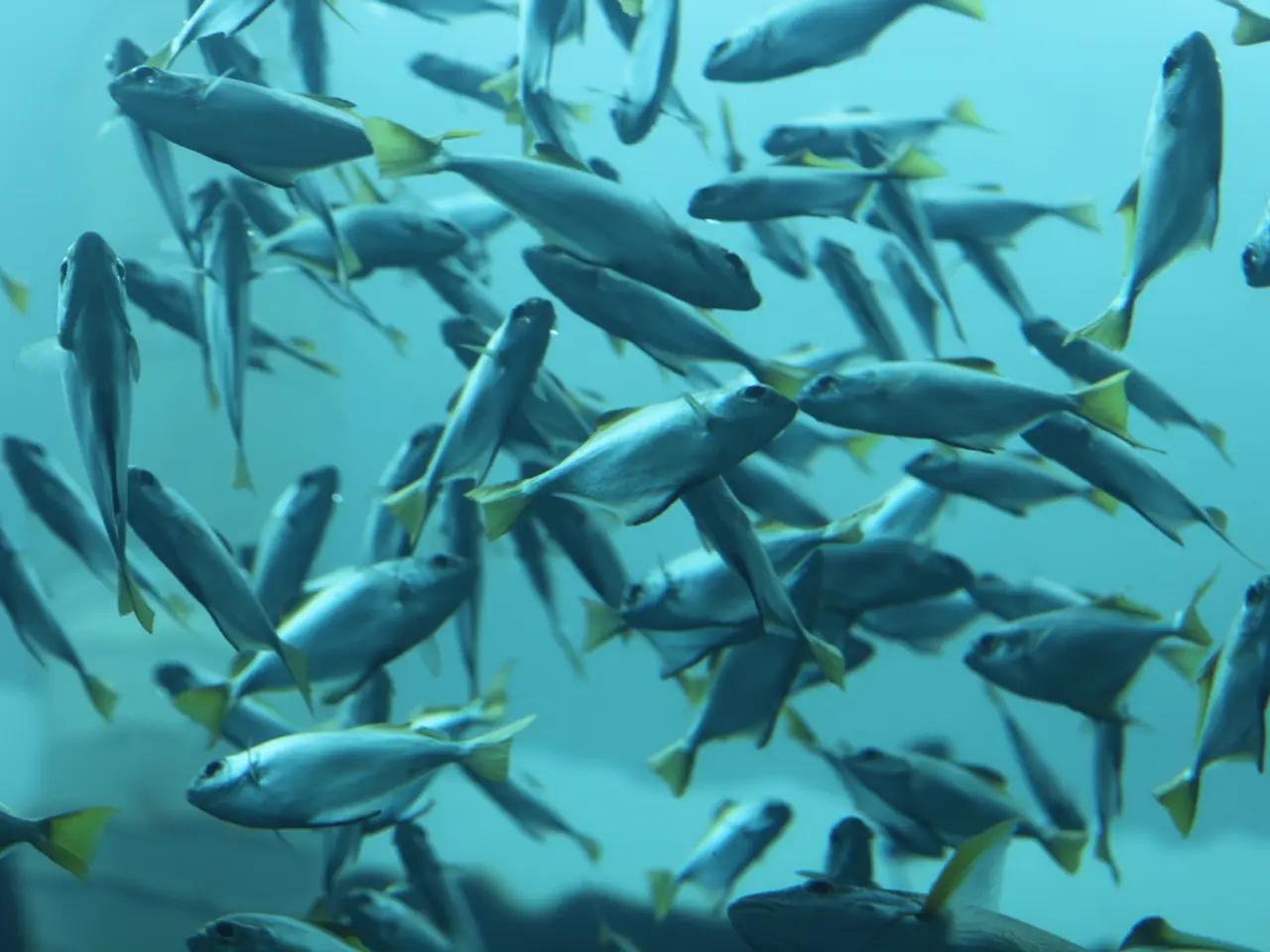Drug Contamination disrupting Salmon Migratory Patterns: Observed Behavioral Modifications in the Natural Habitat
Pharmaceuticals, through wastewater, improper disposal, and industrial effluents, are finding their way into aquatic ecosystems worldwide, raising concerns due to their ability to target conserved neurobiological pathways [1]. A recent study in Sweden's River Dal has shed light on the long-term effects of one such pharmaceutical, clobazam, on Atlantic salmon populations and aquatic ecosystems [2].
The research revealed that clobazam pollution in waterways changes wild Atlantic salmon migration and risk responses. Salmon exposed to clobazam exhibited a shorter time navigating hydropower dams and displayed reduced risk aversion, which could affect survival and reproductive success in the long term [1]. Such behavioral changes may impair their ability to evade predators or successfully spawn, potentially leading to population declines over time.
Clobazam, a drug used for epilepsy that affects neurological activity, can bioaccumulate and interfere with fish neurochemistry, disrupting essential behaviors [2]. This chemical exposure can cascade through aquatic ecosystems by altering predator-prey dynamics and nutrient flows.
The impacts of clobazam on Atlantic salmon migration and behavior have global implications. They imply broader ecological risks, including disrupted fish population dynamics due to altered migration and reproductive behaviors, changes in aquatic food web structure from shifts in predator and prey interactions, and potential bioaccumulation of psychoactive substances, contributing to chemical stress for multiple species [2].
While the research mainly documents behavioral shifts in salmon, similar ecological risks likely pose threats to other fish and invertebrate populations. Comprehensive ecosystem-level impacts remain an active area of research, with current evidence mostly from localized studies such as those in Sweden's River Dal. The persistence, concentration, and combined effects of multiple pharmaceutical pollutants require further investigation to fully understand long-term ecological consequences [2].
The study underscores the need to preserve aquatic ecosystems and to improve wastewater treatment to mitigate the effects of pharmaceutical pollution on wildlife. Future research should focus on understanding the long-term effects of pharmaceutical pollution on various aquatic species and ecosystems, as well as the cumulative effects of multiple pollutants and their interactions within aquatic ecosystems [1][2]. Global awareness is essential to address these concerns and pave the way for comprehensive conservation strategies.
References: [1] Global Awareness Project. (2022). Pharmaceuticals in the Aquatic Environment: A Global Concern. Retrieved from https://www.globalawarenessproject.org/pharmaceuticals-in-the-aquatic-environment-a-global-concern/ [2] Olsson, J., et al. (2021). Clobazam pollution in waterways changes wild Atlantic salmon migration and risk responses. Environmental Pollution, 276, 113074. doi: 10.1016/j.envpol.2021.113074
- The findings of a recent study suggest that pharmaceuticals, such as clobazam, can have long-term effects on wild populations of Atlantic salmon and aquatic ecosystems.
- Clobazam, a drug commonly used for epilepsy, has been shown to impact the neurochemistry of fish, potentially disrupting essential behaviors and leading to changes in migration and risk responses.
- The ecological implications of these behavioral changes extend beyond salmon populations, and they could affect the health and wellness of other fish and invertebrate species as well.
- The research highlights the importance of preserving aquatic ecosystems and improving wastewater treatment to reduce the effects of pharmaceutical pollution on wildlife and help mitigate climate change.
- Comprehensive conservation strategies and further scientific research are needed to understand the long-term consequences of pharmaceutical pollution on various aquatic species and the cumulative effects of multiple pollutants within ecosystems.
- Awareness of the global concern over pharmaceuticals in the aquatic environment is crucial to develop and implement effective conservation and research efforts in the fields of environmental science, ecology, and health-and-fitness-exercise.




